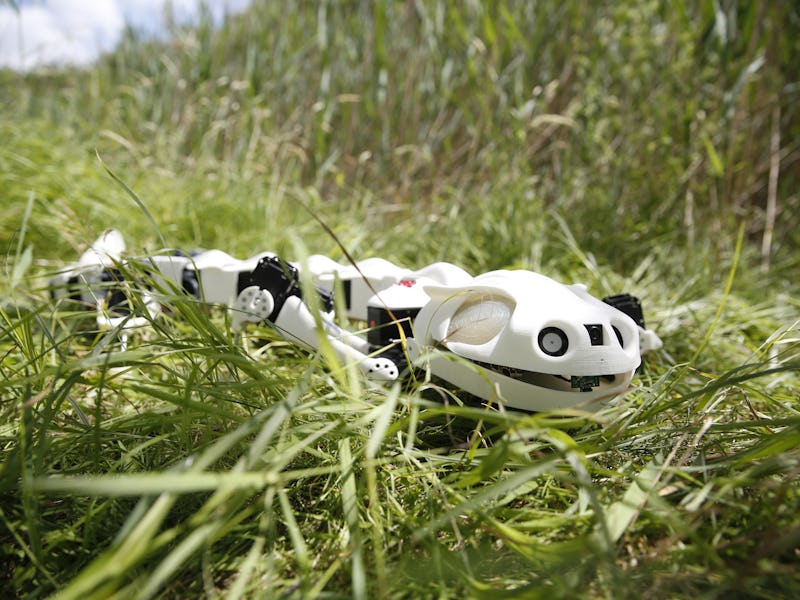New Robot Salamander Features Detailed, Working Vertebrae
EPFL Scientists studied x-rays in order to create a robot that mimics the movement of a salamander.

Not everyone is okay with dissecting animals for the sake of science. In the interest of studying the vertebrae of the salamander (specifically, the species known as Pleurodeles waltl) more closely, a group of scientists at the EPFL have created a robotic replica of the creature that can walk, crawl, and even swim. The creature has 3D-printed bones, motorized joints, and electronic circuitry in place of a nervous system – helping propel it forward and navigate its surroundings.
While the replica is close to the actual creature, it isn’t a precise reproduction. The amphibian has 40 vertebrae and multiple joints that allow it to rotate freely; but the replica has limited movement, and only 27 motors and 11 segments along its spine. It’s the latest in a line of salamander robots created by the lab, but this model, according to the team, has the potential to give researchers a closer look at how exactly the animals move.
“What is new is really our approach to building Pleurobot,” says Auke Jan Ijspeert, who is leading the the project. He explains that the process involved “striking a balance” on the design by simplifying the robot’s bone structure and replicating the salamander’s gait in three dimensions.
The real genius is in the focus on the spinal cord, which the company says was a decision Ijspeert made himself. The spinal cord controls the motion of the body — not the brain. So, the company set out to mimic the salamander’s movement, hypothesizing that the 3D replica could elucidate how the spinal cord works, and how, specifically, it affects the body. Using electrical stimulation, researchers set a course for the salamander to perform an array of tasks, with the ability to walk functioning at the lowest setting.
The team isn’t looking to stop with salamander robots in its line of “biorobots” for research. Studies like those performed on the salamander robot not only give scientists a better sense of how the animal moves, but how the human spinal cord works and has developed over time. The lab’s engineering has the potential to become a crucial piece of future neuroscience and biomechanics — for animals and humans.